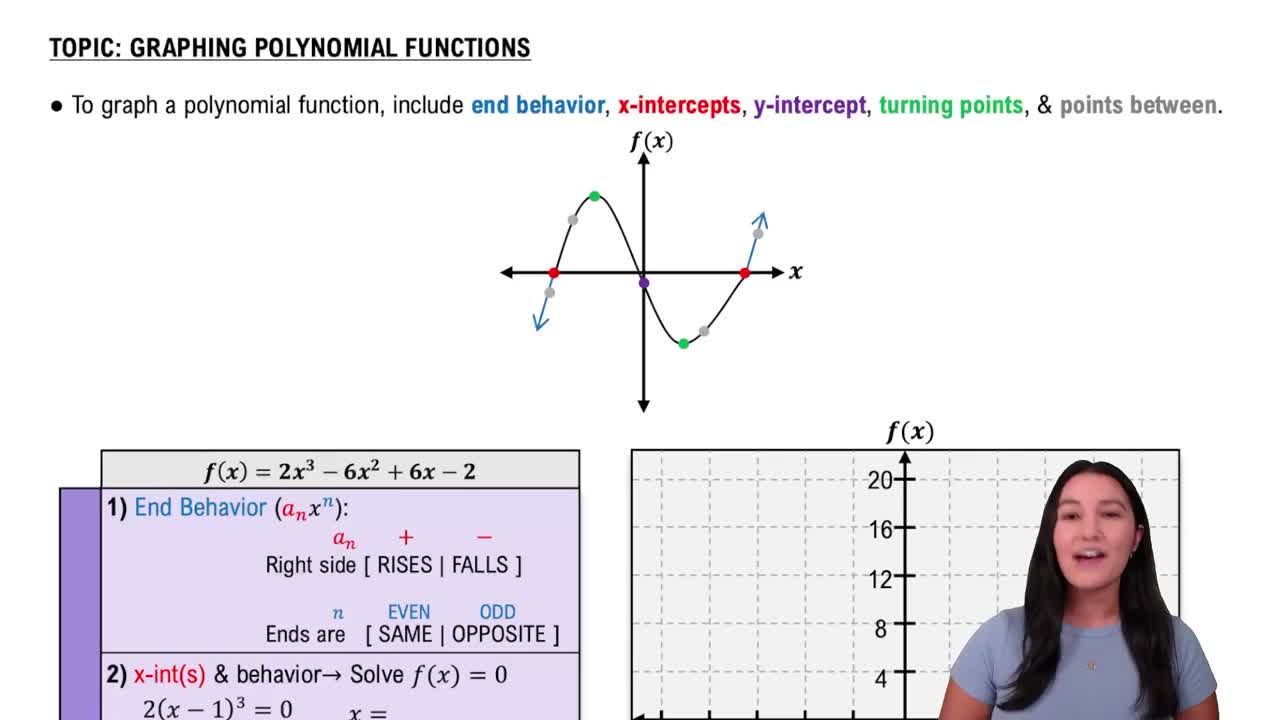Here are the essential concepts you must grasp in order to answer the question correctly.
Polynomial Inequalities
Polynomial inequalities involve expressions that compare a polynomial to a value using inequality symbols (e.g., ≥, ≤, >, <). To solve these inequalities, one typically finds the roots of the corresponding polynomial equation and tests intervals between these roots to determine where the inequality holds true.
Recommended video:
Interval Notation
Interval notation is a mathematical notation used to represent a range of values on the real number line. It uses brackets [ ] to include endpoints and parentheses ( ) to exclude them. For example, the interval [a, b) includes 'a' but not 'b', indicating all numbers from 'a' to 'b', including 'a' and excluding 'b'.
Recommended video:
Graphing Solution Sets
Graphing solution sets on a real number line visually represents the solutions to an inequality. Each solution is marked with a solid dot for included endpoints and an open dot for excluded endpoints. This graphical representation helps in understanding the range of values that satisfy the inequality, making it easier to interpret the results.
Recommended video:
Graphing Polynomial Functions
 Verified step by step guidance
Verified step by step guidance Verified video answer for a similar problem:
Verified video answer for a similar problem:

